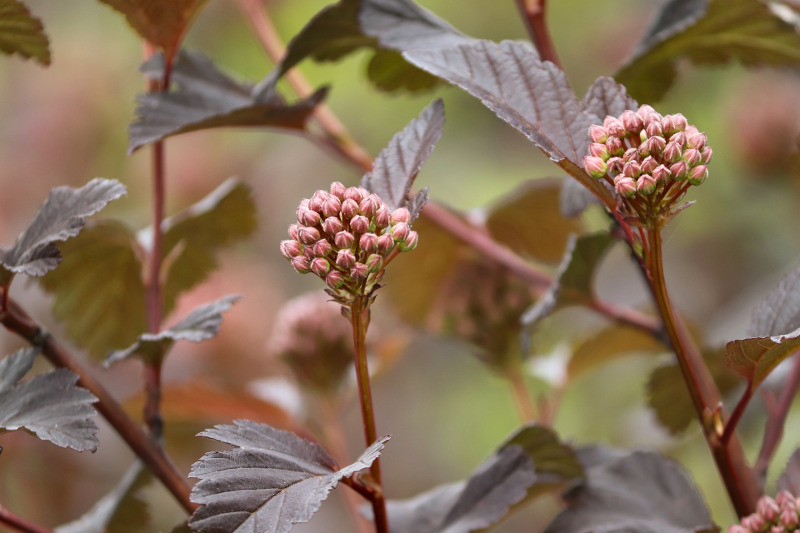Ninebark is a drought-tolerant plant that can grow in less than desirable conditions such as rocky or clay soils. This tough plant has a shallow, spreading root system that can handle both dry and wet conditions; it is considered a good candidate for rain gardens. Ninebark water requirements are fairly low. Once established, Ninebark can survive can often survive on rainfall alone.

How to Tell if Ninebark Needs Watered
Ninebark is a hardy plant and usually does not have any issues while growing. Newly planted Ninebarks may display wilted leaves as it adjusts to a new environment. Make sure to feel the soil for moisture and water if you notice dry or cracked soil. Ninebarks can handle wet soil, so there is less danger of overwatering it compared to other shrubs.
How Often To Water Ninebark
Ninebark can grow in both dry and wet conditions. During the first year after planting, frequent watering is recommended. The goal is to maintain evenly moist soil. This will help to establish a strong root system that can withstand drought.
Once established, usually a year or two after planting, Ninebark plants are drought resistant. If the shrub receives at least an inch of rainfall a week, no supplementary watering will be needed. If not, water deeply, providing about an inch of water per week.
Container-grown Ninebark requires regular watering, as soil dries out much faster in pots than in-ground. The goal is to keep the soil moist during the first year of planting. Be sure that the container has drainage holes and loose, well-drained potting soil. Once established, weekly deep watering is recommended.
Best Time To Water Ninebark
Typically, Ninebark should be watered during the morning hours. This will allow the plant to better withstand the heat of the day. During the winter months, this deciduous shrub will go dormant and will not need additional watering.
How to Water Ninebark
Step 1 - Check the soil for moisture
If the top two inches of soil are dry, water Ninebark.
Step 2 - Provide one inch of water per week.
Plan on one inch of water weekly either from rainfall or watering. This translates to about 1 gallon of water for a small shrub.
Step 3 - Water deeply.
Allow the water to soak in slowly so it hydrates the entire rootball. Use a soaker hose, drip irrigation or hose on slow trickle to deliver water slowly to the roots.
Step 4 - Water the base of the plant.
Water around the entire root zone, not just one spot, and avoid wetting the foliage.

Ninebark Watering Tips
- Regularly water newly planted Ninebark to help it establish.
- Slow, deep watering promotes drought tolerance.
- Water established plants if rainfall is scarce.
- Provide one inch of water each week in the absence of rain.
Sources:
"Common Ninebark." Extension – University of Wisconsin-Madison. fyi.extension.wisc.edu
"Plant Profile: Ninebark." Minnesota State Horticultural Society. northerngardener.org
"Rain Garden Plants:(Physocarpus Opulifolius) – Ninebark." Clemson University, Clemson Cooperative Extension. hgic.clemson.edu.
 |
Author Chris Link - Published 09-30-2021 |
